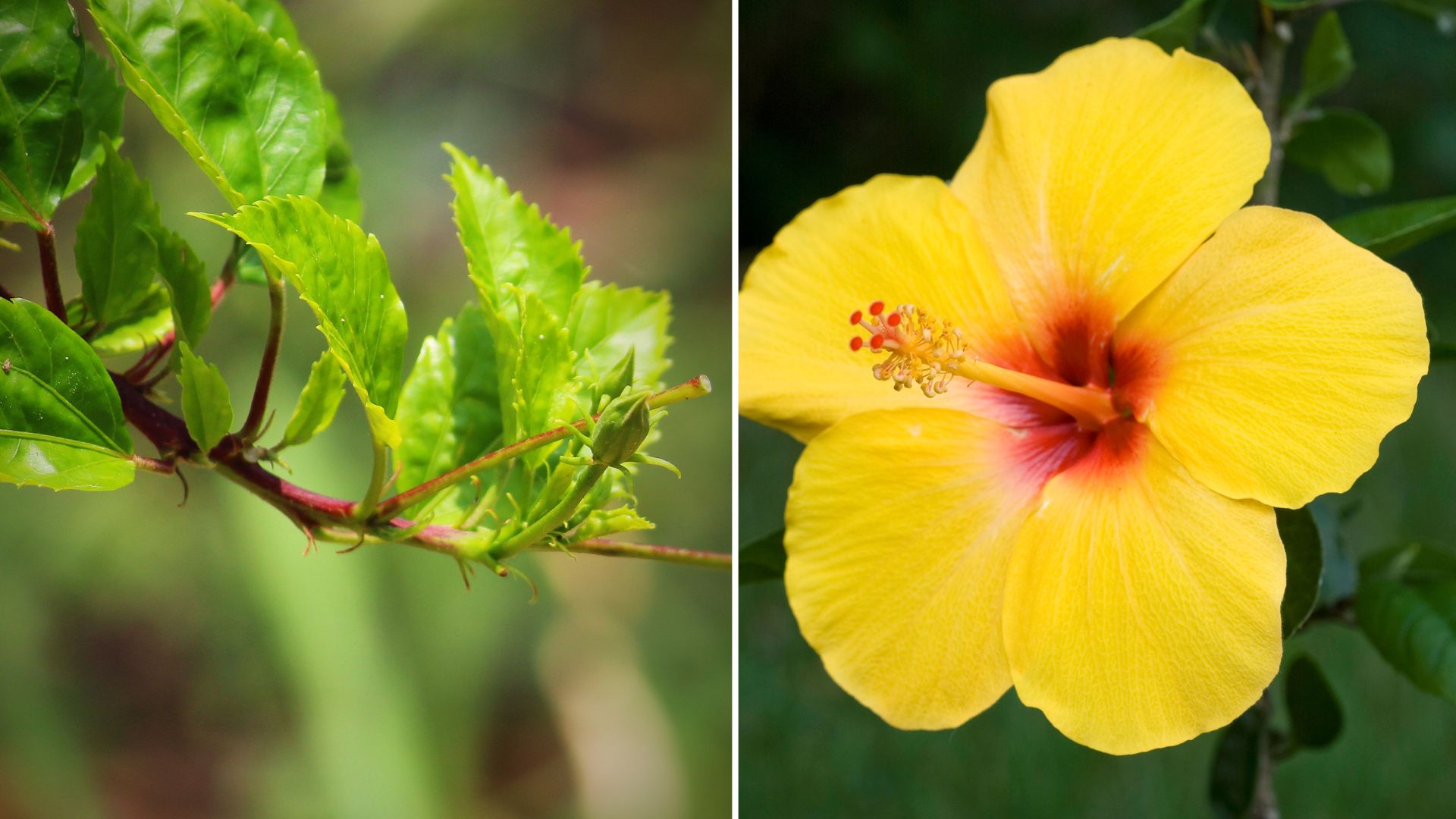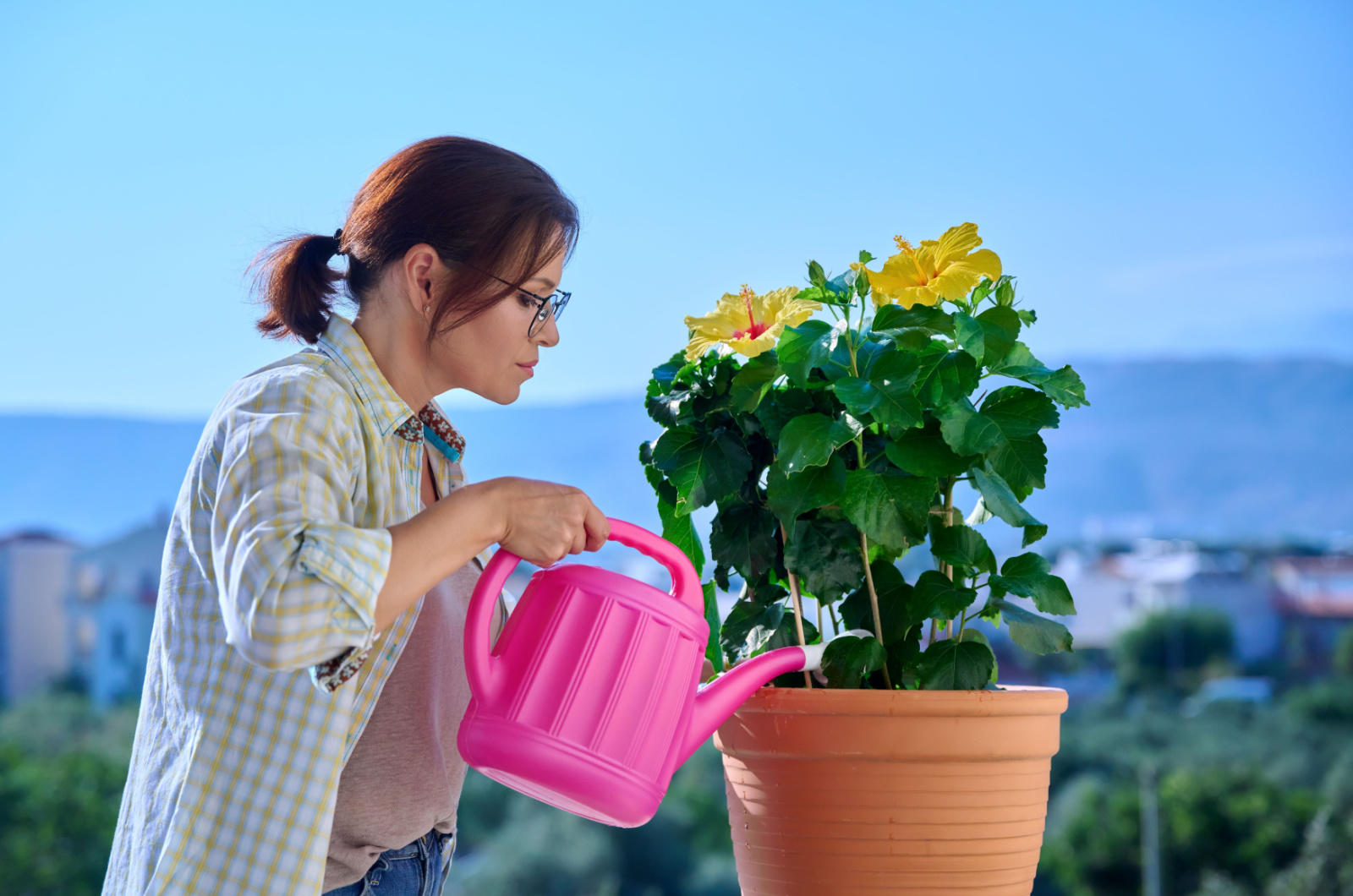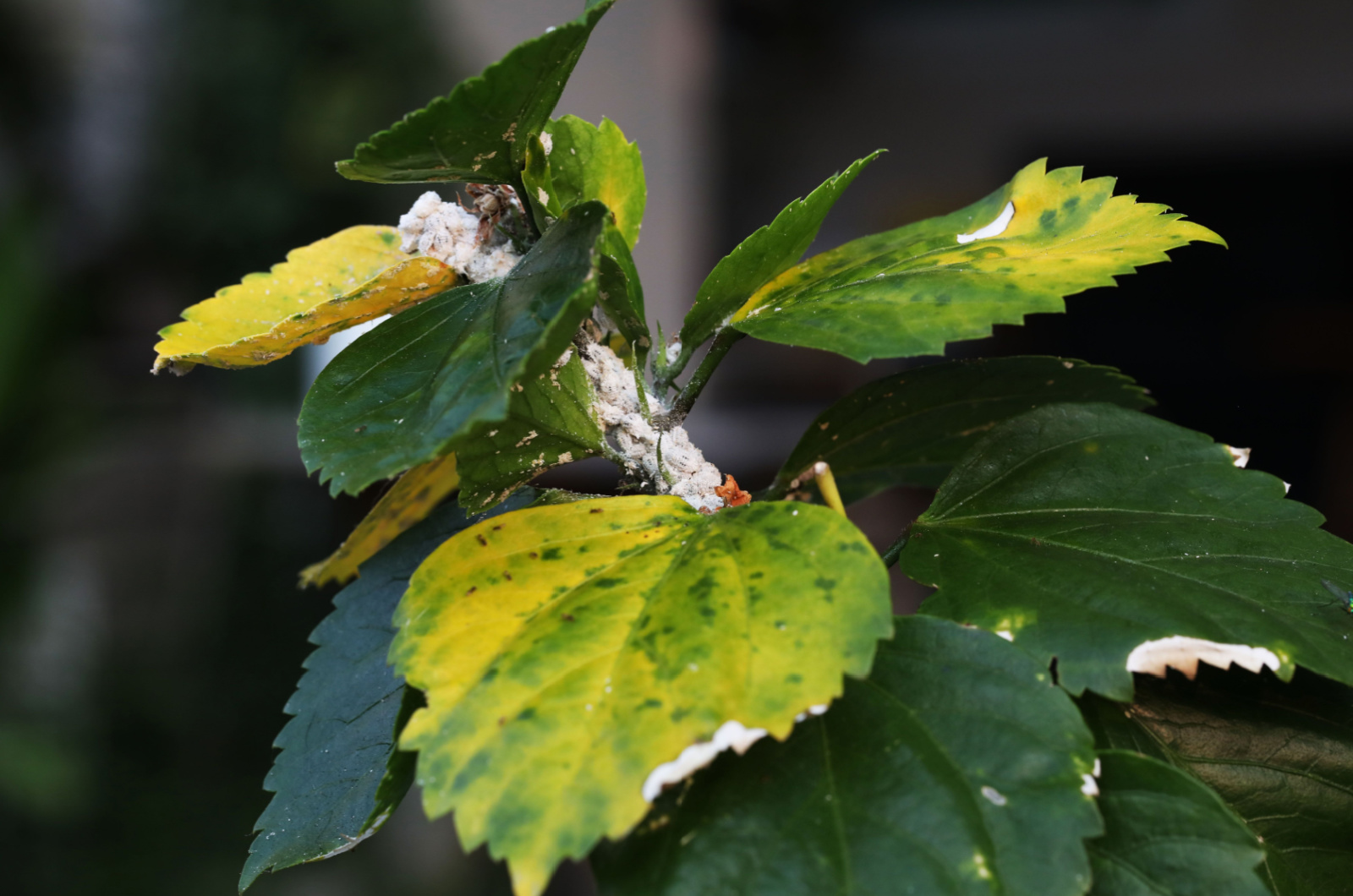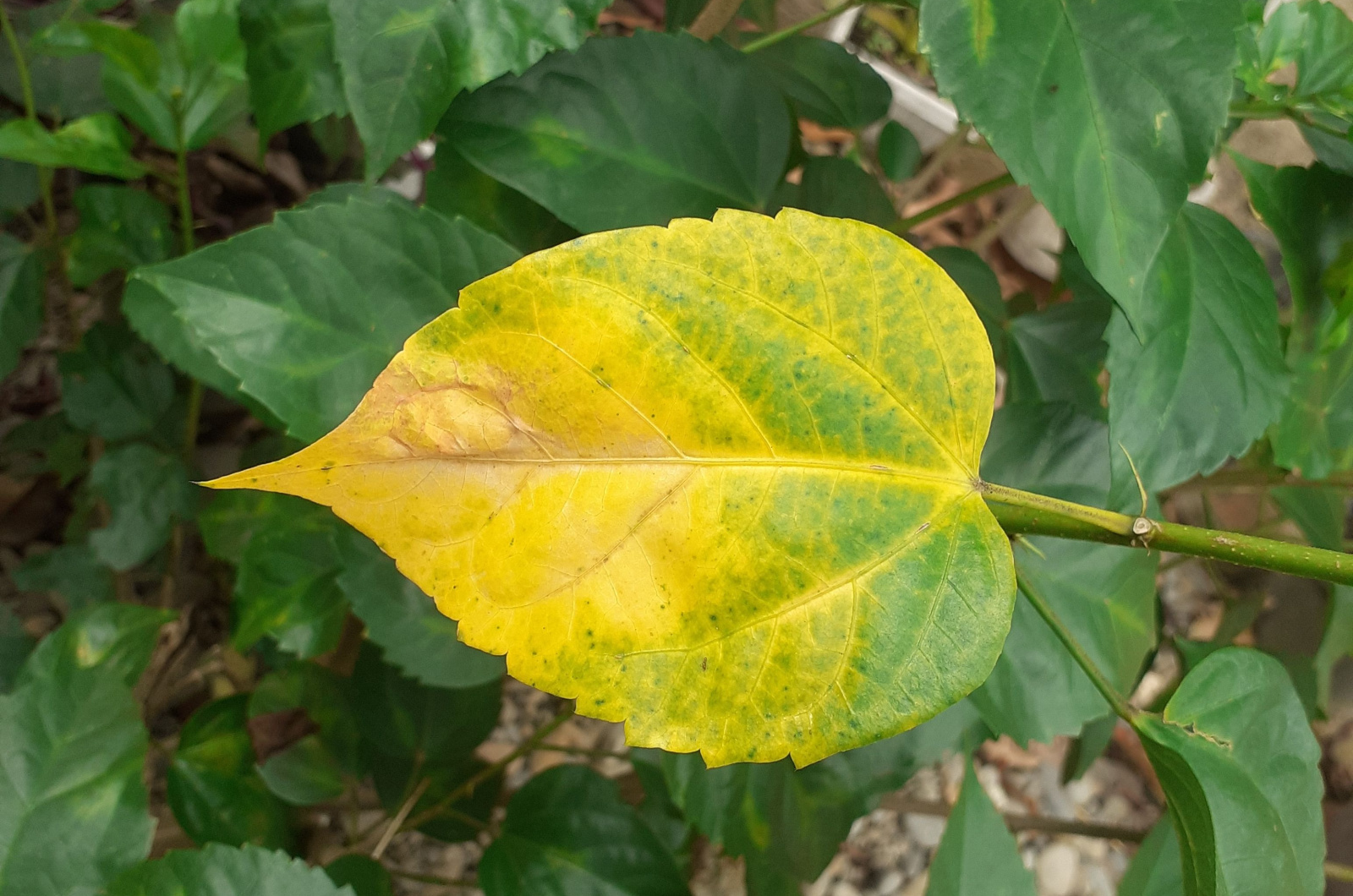The vibrant and exotic hibiscus plant is a favorite among gardeners for its stunning blossoms and lush green foliage. However, if you’ve noticed your hibiscus leaves starting to turn yellow, it can be a cause for concern.
Yellowing leaves on your hibiscus can indicate that something isn’t quite right with your plant, and understanding the reasons behind this change in color is crucial for nurturing your hibiscus back to health.
In this article, we are going to cover the common causes of yellowing hibiscus leaves and explore how to address each issue effectively, so you can restore your hibiscus to its vibrant glory!
1. Inadequate Watering
Even though the hibiscus is a hardy plant that can tolerate different growing conditions, having the perfect watering schedule is a must if you want it to keep thriving and growing. Too much or too little watering can lead to different issues, including yellowing of the leaves.
Overwatering can even lead to root rot, which is a fatal fungal disease that can completely ruin your exotic plant. However, keeping your plant bone-dry is also not a solution because your plant still needs water to shine.
2. Low Sunlight Exposure
In case you didn’t know, hibiscuses are one of the most sun-loving plants and thrive when exposed to full sun. If your plant is growing in shade, it can drop some leaves.
3. Pest Infestation
Unfortunately, you are not the only one that fancies hibiscuses – spider mites, mealybugs, and aphids can often be found munching on their lovely leaves. This results in yellow leaves and spots developing all over the leaves’ surfaces.
In most cases, these pests will settle on the undersides of the leaves. Therefore, if you see anomalies, always check under the leaves first!
Please remember that these pests usually attack weak plants, so make sure to follow a hibiscus plant guide thoroughly.
4. Not Fertilizing Your Hibiscus
Lack of nutrients, specifically phosphorus and nitrogen, can lead to yellow hibiscus leaves. If you don’t give your plant any plant food, it will most likely develop yellow leaves and weak stems.
5. Sudden Changes
If you keep moving your plant around and it experiences sudden changes in humidity, temperature, or light exposure, it can stress out the plant, which ultimately causes yellowing of the leaves.
If you just moved your plant, it may drop some leaves but this is completely normal because it needs to adapt to its new environment.
You might be interested in: 8 Care Tips To Help You Deal With A Hibiscus Not Blooming
How To Fix Your Hibiscus
Luckily, you can easily fix any of these issues and nurture your hibiscus back to health. All you need to do is figure out the cause and make some adjustments around it.
Here’s what you need to do:
• Water Properly – use well-draining soil and water it every few days. Add compost to help with soggy soil or mulch to help with dry soils.
• Improve Soil Fertility – add equal amounts of potassium, nitrogen, and phosphorus to the soil if you want to keep your hibiscus happy and healthy.
• Provide Good Sunlight – move your plant to a sunnier spot where it can be exposed to full sun throughout the day.
• Get Rid Of Pests – apply some neem oil or pesticides if you spot any critters on your hibiscus.
• Provide It With An Appropriate Environment – hibiscuses like humidity, so make sure that the humidity levels are always around 50 percent. If you live in hot and dry climates, place your hibiscus near a water feature or other plants.
Also read: How To Care For The Cranberry Hibiscus + What It Really Is




